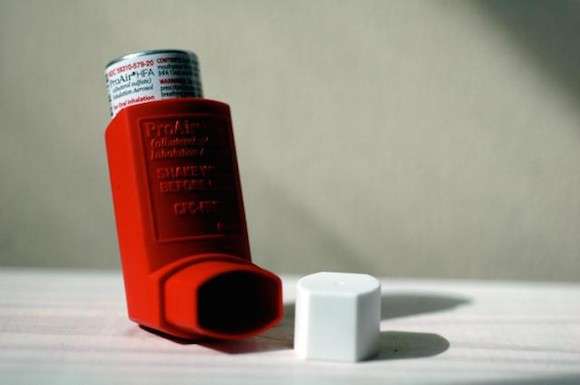What happens on the molecular level when smog gets into the lungs?

Coughing. A sore throat. Maybe a pain in your chest as you take a deep breath.
These are all common symptoms for many city-living Australians when smog levels are high. And while it is well understood that smog can cause such problems, new research has for the first time given us a glimpse as to what might be happening at the molecular level.
The University of Melbourne's Professor Richard O'Hair, from the School of Chemistry's Bio21 Institute, in collaboration with Professor Stephen Blanksby (from the Queensland University of Technology and formerly the University of Wollongong) co-authored a study examining how ozone reacts with models of lung proteins.
Smog is made up of ozone - an invisible gas and a well-known air pollutant made up of three oxygen atoms. Ozone is also the pollutant that leaves a distinctive smell in the air after using a photocopier.
Using a mass spectrometer, the research team was able to introduce the amino acid cysteine - a component of lung proteins - with ozone molecules in a highly-controlled, near-vacuum environment.
The effect was instant, or in scientific terms, close to the "collision rate".
"We observed that the cysteine became 'radicalised' in the presence of ozone," said Professor O'Hair.
"No one had really noticed that you can form free radicals in the reaction of proteins with ozone, and since these are highly reactive species, you don't want them around.
"Free radicals can unleash fury and cause many chemical transformations.
"If they get out of control, they can just chew through a system and destroy it. For example, free radical damage is thought to play a key role in heart disease and some cancers.
"So when free radicals are formed in the body, such as the lining of the lung, damage occurs, that may ultimately result in inflammation and breathing difficulties."
The research pushes forward the understanding of the molecular effect of ozone on proteins. But because the tests were conducted in an artificial environment, more work needs to be done to confirm the creation of protein free radicals in lungs and link their effects on human lung physiology.
Professor O'Hair hopes the research inspires fellow scientists to build on the findings.
Associated research will be of the most benefit to those with asthma, other respiratory illnesses or the young and the elderly who are most susceptible to smog.
"If there is free radical damage to lung proteins, it's unlikely to be reversible, so you won't be able to design a magic-bullet drug to undo the damage," Professor O'Hair said.
"Ozone is the result of pollution. So the message has to go out that we need to be proactive on reducing smog levels and pollution."
The results have just been published in leading chemistry journal, Angewandte Chemie International Edition.
Journal information: Angewandte Chemie International Edition
Provided by University of Melbourne




















